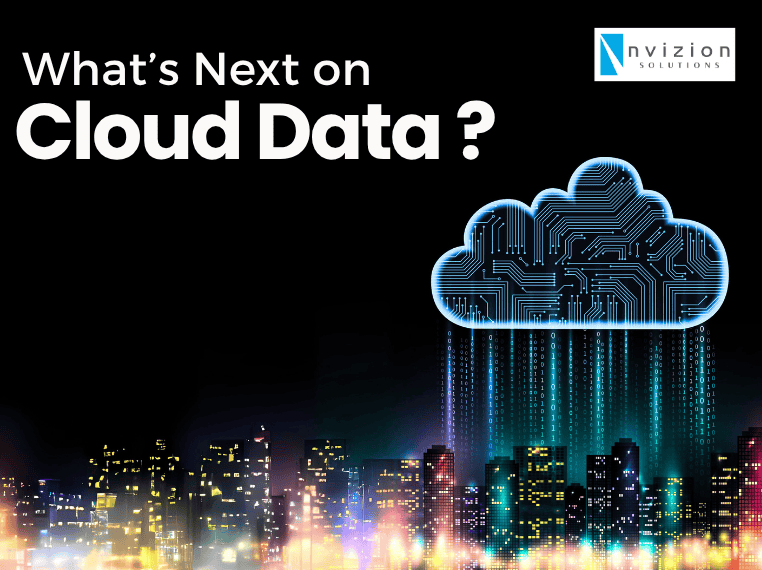The Future of Cloud Data Management: Trends, Challenges, and Solutions

Data is at the center of every business today. With digital tools, online transactions, and connected systems, the amount of data keeps growing. Managing this data with traditional systems is no longer enough. Businesses now turn to cloud data management to keep up.
Cloud data management is the process of storing, organizing, and using data in the cloud. It gives businesses flexibility, scale, and better control over their data. A cloud data management platform brings together tools that handle storage, security, integration, and analytics in one place.
But this shift to the cloud brings both opportunities and challenges.
Key Components of Cloud Data Management
Cloud data management is more than just moving files online. It brings together several key elements that make data easy to manage, secure, and use.
· Cloud Storage
This is where data is saved. Instead of storing information on physical servers, cloud storage keeps it in virtual spaces. Providers like AWS, Microsoft Azure, and Google Cloud offer flexible storage options for different types of data.
· Cloud Database Management
Many businesses rely on databases to store structured information like customer records or transactions. In the cloud, these databases can scale quickly and stay available even when traffic increases. They also offer features like automatic backups and recovery.
· Data Integration
Data often lives in many places applications, systems, devices, or spreadsheets. Integration tools help bring this data into one place. They help clean it, match formats, and make it usable across systems.
· Governance and Security
Governance sets rules for how data is handled, who can access it, and how long it is kept. Security protects data from leaks, theft, or misuse. Together, these practices ensure that data stays protected and compliant with regulations.
· Analytics and Reporting
Once data is stored and cleaned, it needs to be analyzed. Cloud platforms include tools to help teams turn raw data into dashboards, charts, or reports. This helps leaders make decisions based on facts.
Benefits of Cloud Data Management
Cloud data management brings many practical benefits to businesses of all sizes.
· Scalability
You can increase or reduce your data capacity based on business needs. There’s no need to buy new servers. You only use what you need and scale when required.
· Cost Savings
With cloud services, you avoid big upfront costs for infrastructure. You pay based on usage. This model works well for growing companies or those with changing needs.
· Access and Collaboration
Cloud data is available from anywhere with an internet connection. Teams in different locations can work together using the same data in real time.
· Automatic Maintenance
Cloud providers handle updates, system patches, and backups. This reduces the workload on your internal IT team and helps avoid human errors.
· Stronger Security and Compliance
Cloud providers invest heavily in security tools, monitoring, and audits. Most platforms follow strict data laws and help businesses stay compliant with global regulations.
· Faster Decision-Making
With all your data in one place and tools to analyze it, decisions can be made faster. Real-time insights help teams respond quickly to changes in the market or operations.
Challenges and Risks
Cloud data management offers a lot, but it comes with itsshare of risks. Knowing these in advance can help avoid major issues.
· Data Security and Privacy
Moving data to the cloud introduces new security risks. Misconfigurations, weak passwords, or open access settings can make sensitive data vulnerable.
· Vendor Lock-In
Once you build systems around one cloud provider, switching to another can be hard. Each provider uses different tools and formats, making migration expensive and complex.
· Poor Governance
Without clear rules, data can become messy. Duplicates, missing information, or unclear ownership can lead to confusion and poor decision-making.
· Unexpected Costs
Cloud services are cost-effective if managed well. But unused services, large data transfers, or premium features can drive up your bill if not tracked properly.
· Connectivity Dependence
Cloud systems need strong and reliable internet. If your connection is poor or interrupted, access to your data is limited or completely blocked.
· Compliance Challenges
Data laws differ across countries and regions. Keeping cloud data compliant with different rules, especially when stored in multiple locations, can be complex.
Best Practices for Effective Cloud Data Management
Good planning and the right habits make cloud data management more effective. Here are practices that help businesses avoid problems and get better results:
· Start with a Clear Plan
Decide what data needs to be moved and when. Don’t try to migrate everything at once. Classify your data, identify risks, and set clear goals.
· Choose the Right Cloud Platform
Pick a platform that fits your business. Compare pricing, security features, support, and compatibility with your existing systems.
· Automate Key Tasks
Use automation for backups, monitoring, and data transfers. This reduces manual work and avoids mistakes.
· Set Clear Governance Policies
Define roles, responsibilities, and accesscontrols. Make sure everyone knows what they are allowed to do with the data.
· Monitor Usage and Spending
Use dashboards and alerts to track data usage, system performance, and costs. This helps spot problems early and stay within budget.
· Encrypt All Data
Use encryption for both data in storage and data being transferred. Even if data is accessed, encryption keeps it unreadable without the right keys.
· Train Your Team
Make sure everyone who works with data understands cloud systems, basic security rules, and how to follow policies. Regular training helps reduce human error.
Future Trends in Cloud Data Management
Cloud data management is evolving quickly. Here are sometrends that will shape its future:
· Increased Use of AI and Automation
Artificial intelligence will take over more routine tasks like detecting errors, cleaning data, or optimizing storage. This makes data systems faster and more efficient.
· Multi-Cloud and Hybrid Models
Many businesses will combine services from multiple cloud providers. They’ll also keep some systems on-premise while using cloud for others. This mix helps avoid lock-in and gives more flexibility.
· Edge Computing
Data won’t always be sent to a central cloud server. More processing will happen closer to where data is created, like on local devices. This reduces delay and saves bandwidth.
· Zero Trust Security
Instead of trusting users by default, every access request will be verified. This adds an extra layer of protection to cloud data.
· Smarter Metadata Management
Companies will use better tools to track meta data. Knowing who owns the data, where it came from, and how it’s being used helps manage data more effectively.
· Business-Centric Platforms
Cloud data management platforms are becoming more user-friendly. They are designed for business users, not just IT teams. This allows more people to work with data without deep technical skills.
Cloud data management is no longer optional. It’s essential for how modern businesses store, protect, and use data. A strong cloud data management platform helps companies grow, collaborate, and make smarter decisions. It cuts costs, improves security, and makes operations more flexible.
But cloud data management also comes with real challenges. Poor planning, weak governance, and unclear responsibilities can cause confusion and risk. Businesses need to understand both the benefits and the risks.
The future of cloud data management looks promising. With the right mix of tools, planning, and training, companies can unlock more value from their data and stay ready for what comes next.
Faq
What is cloud data management?
Cloud data management means storing, organizing, and protecting your data using cloud services instead of keeping it on physical servers. It lets businesses access data from anywhere, scale storage easily, and keep information secure and up to date.
Insights
Looking for resources, tools, tips and industry news? Stay ahead of the curve with quick access to thought leadership and expert insights on digital transformation.
